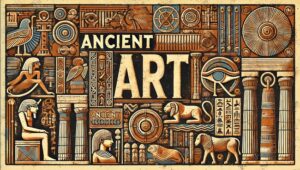Batik Art Design: A Detailed Introduction

Batik is a traditional art form that has its roots in various cultures, particularly in Southeast Asia, including Indonesia, Malaysia, and India. It is a method of producing colored designs on textiles by dyeing them, having first applied wax to the parts to be left undyed.
Also Read:- Liberal Arts: A Detailed Introduction
Here are some insights into Batik art and design:
Origin & Technique: Batik originates from the Javanese word meaning “painted”. It uses a wax-resist dyeing process to produce vibrant textiles. The design is first drawn with hot wax, which then resists dyes and allows the artisan to color selectively.
- Modern Batik: Contemporary batik, while owing much to the past, is markedly different from the more traditional and formal styles. Modern batik artists express themselves through various subjects, and a long-tailed brush or “tjanting” is used to apply the wax.
- Batik Motifs: Batik motifs are often symbolic. For instance, the ‘kawung’ motif from Java resembles a palm fruit, representing fertility and purity.
- Batik in India: In India, Batik art can be traced back to the 1st century AD. The Khatri community of Gujarat were traditional artisans of this art.
- Batik in Home Decor: Batik designs are not just limited to clothing. They are also used in home decor, showcasing intricate patterns and vibrant colors.
- Batik in Malaysia: In Malaysia, batik is considered a cultural icon with “Malaysian Batik Day” celebrated every year.
- Batik in Art & Craft: Batik art has also found its way into various crafts, including wall hangings, paintings, and even in DIY projects.
- Batik in Fashion: Batik designs have been incorporated into modern fashion, with designers using batik patterns in their collections, making it a blend of traditional and contemporary
- Digital Batik: With the advent of technology, digital versions of batik designs are available, which graphic designers use in various projects.
- Batik Beyond Fabric: The art of batik has transcended beyond fabric, finding its place on leather, wood, paper, and even ceramics.
Batik art, with its rich history and cultural significance, continues to inspire and evolve, finding its place in modern design and fashion. Whether it’s the intricate patterns, vibrant colors, or the symbolism behind each motif, batik remains a testament to the beauty of traditional art forms.








